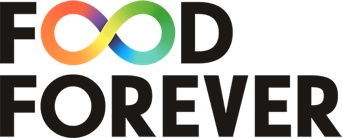Rajasthan's Biggest Treasure
17.07.2019
Ilse Köhler-Rollefson, Veterinarian and founder of camel charisma
Pastoralists often get a bad rap and many associate their way of livestock production with overgrazing, drought and desertification. But if you think a bit deeper about them, as I have done in my role as the coordinator of the League for Pastoral People, you realize that they are actually performing a miracle by systematically producing food without any of the routine agricultural inputs such as fertilizer, fossil fuels, pesticides and herbicides. And they do not even clear away the native vegetation as crop farmers do but deploy small armies of intelligent and trained animals to directly harvest biodiversity and transform it into high protein food.
One of the examples of such a pastoralist culture are the Raika pastoralists of Rajasthan, a state in the west of India that borders onto Pakistan and is mostly composed of desert and semi-arid scrubland. As hereditary custodians of the camel they have developed a globally unique relationship with this animal, traditionally following a taboo on slaughter. In olden times this served them well, as they were required for transportation by both royalty – who needed camels for desert warfare – and for farmers and small transport entrepreneurs who depended on draught animals. Like most camel nomads, they also shunned selling camel milk, instead giving it away for free.

But with the gradual replacement of camels by tractors and trucks, the market dwindled. In addition, customary grazing areas disappeared, causing camels to be hungry and more prone to diseases, undermining reproduction. Between the early 1990s, the population plummeted from around 1.5 million to an estimated 250,000 currently. The camel being crucial for Rajasthan’s identity and a significant tourist attraction, the government took the step of declaring the camel state animal in 2014. With good intentions, it decreed a law that prohibited export of camels from Rajasthan, as well as their slaughter, castration, and other traditional practices. The impact was disastrous. It disrupted a clandestine trade of camels for slaughter and finished off the market for draught camels from out of state. With camel milk sales also not being legal, all economic rationale for breeding camels was gone. The animal was in danger of becoming a zoo animal.
At the same time, camel milk was getting increasing recognition as having therapeutic value for autism, diabetes, high blood pressure, skin diseases, and as immune system enhancer. Camel dairies were springing up not only in Dubai and Abu Dhabi but also in the US, Australia and Europe.
Should Rajasthan let go of such a resource, when the camel was also being shown to be more climate friendly – emitting less climate gases than other ruminants – and also perfectly adapted to rising temperatures?
These considerations gave birth to Camel Charisma, a social enterprise that has the goal to create income for camel breeders from developing and marketing products from living camels. Initial efforts focused on adding value to camel wool and making camel poo paper. More recently, with the financial help of a private donor from Germany, it set up the Kumbhalgarh camel dairy (named after a nearby fort and wildlife sanctuary) that pasteurizes and bottles camel milk. The milk is frozen and then shipped to the end consumers – mostly for the treatment of autism.
Camel numbers in the area that the Kumbhalgarh camel dairy serves are already rebounding – in fact, the Raika immediately re-invest their profits into buying female camels. The impact is still localized, as daily turn-over is low and the logistics of transporting the milk in ice boxes and by bus are complex and expensive. But in June, the milk and natural smoothies are set to be launched in an up-scale supermarket chain in Delhi which is expected to significantly increase sales. The overall vision is to establish a network of mini camel dairies throughout the state to benefit as many camel breeders as possible, and the ultimate dream is to set up a chain of camel themed cafes in which not only the menu is dominated by camel dairy but the interior design is made from camel raw materials, such as seat covers and carpets from camel wool and camel poo paper for wallpaper and menus.

Recently “Raika camel milk” was included in the Slow Food Ark of Taste featured by Gastro Obscura. Together with leopards, the Raika camel culture is developing into a prime attraction for visitors to the Godwar area of Rajasthan. You can support camel conservation by booking a chaifari – the experience of drinking camel milk and tea with the nomads and snuggling up to a friendly cuddly camel!
For more information visit Ilse’s blog or follow her on Twitter.
